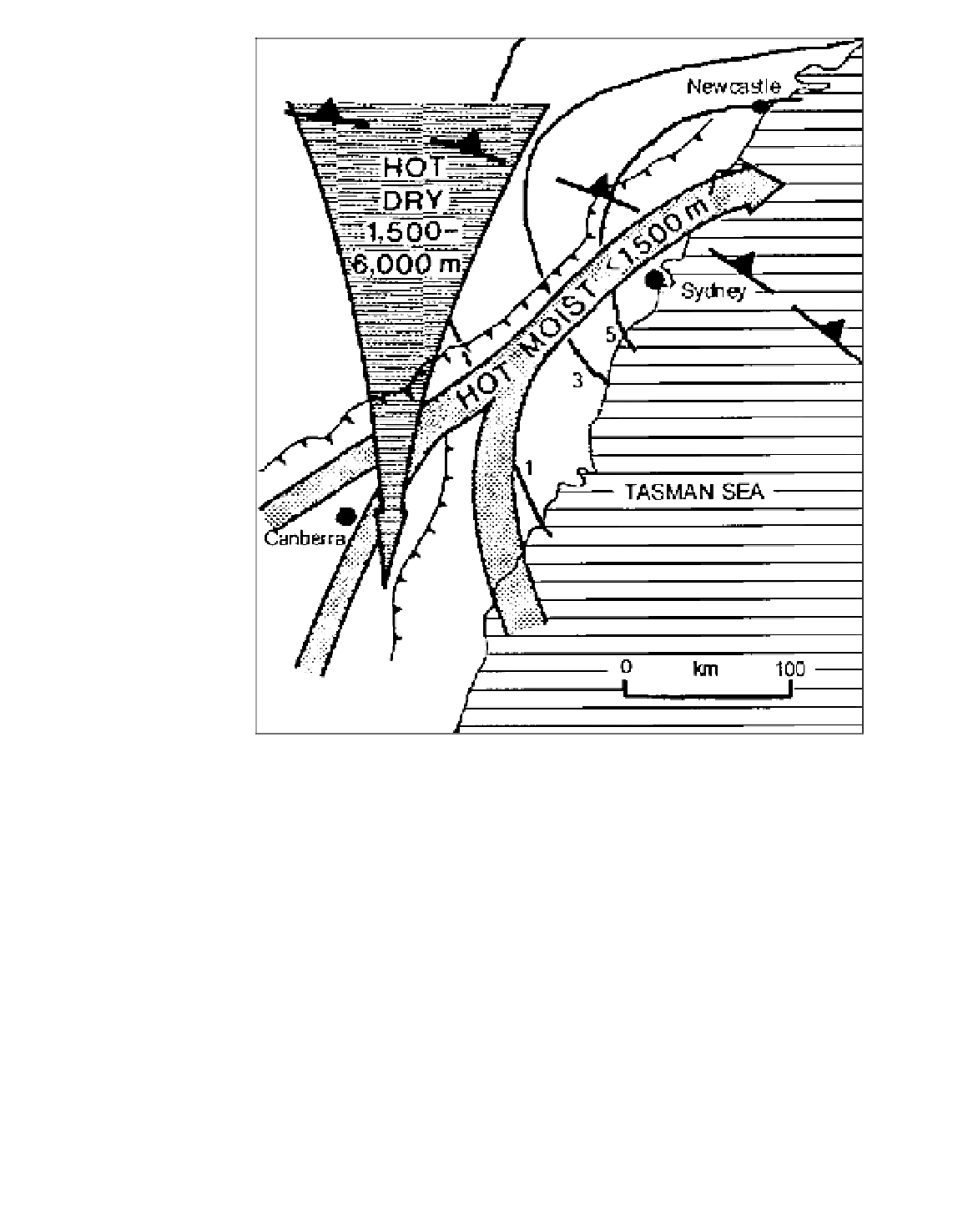Geoscience Reference
In-Depth Information
Figure 9.30
Conditions associated with the severe thunderstorm near Sydney, Australia, on 21 January 1991. The contours indicate
the mean annual number of severe thunderstorms (per 25,000 km
2
) over eastern New South Wales for the period 1950 to 1989
based on Griffiths
et al
. (1993).
Source
: After Eyre (1992). Reproduced by kind permission of the NSW Bureau of Meteorology, from
Weather
, by permission of the Royal
Meteorological Society. Crown copyright ©.
instability in mesoscale storms is the bulk Richardson
Number (Ri) which is the (dimensionless) ratio of the
suppression of turbulence by buoyancy to the generation
of turbulence by vertical wind shear in the lower
troposphere. A high value of Ri means weak shear
compared to buoyancy; Ri > 45 favours independent
cell formation away from the parent updraft. For Ri <
30, strong shear supports a super-cell by keeping
the updraft close to its downdraft. Intermediate values
favour multi-cell development.
Tornadoes, which often develop within MCSs, are
common over the Great Plains of the United States,
especially in spring and early summer (see Figure 9.32).
During this period, cold, dry air from the high plateaux
may override maritime tropical air (see Note 1).
Subsidence beneath the upper tropospheric westerly jet
(Figure 9.33) forms an inversion at about 1500 to 2000
m, capping the low-level moist air. The moist air is
extended northward by a low-level southerly jet (cf. p.
208) and, through continuing advection the air beneath
the inversion becomes progressively more warm and
moist. Eventually, the general convergence and ascent
in the depression trigger the potential instability of the
air, generating large cumulus clouds which penetrate

